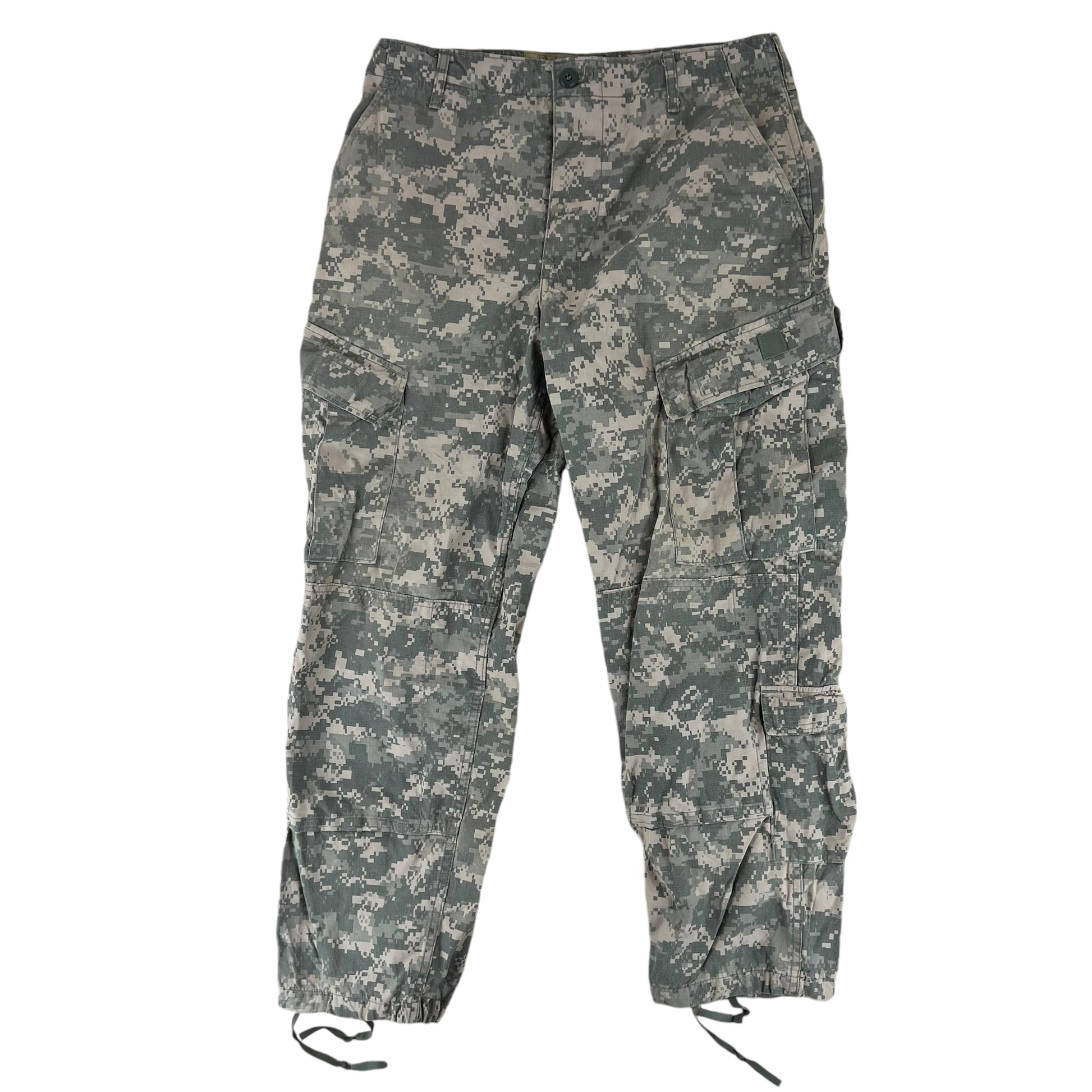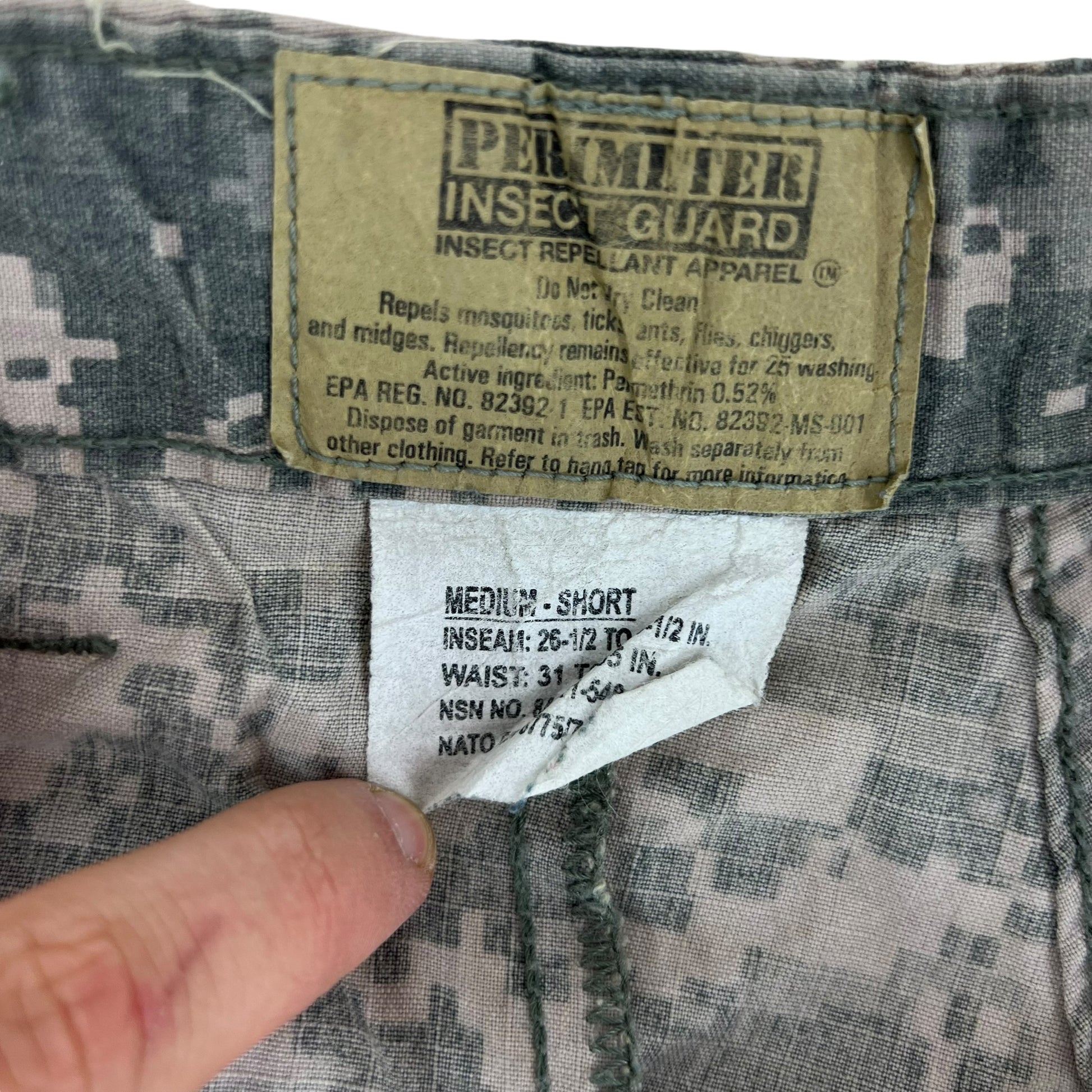United States Army
US Army UCP Pixel Camo ACU BDU Ripstop Combat Trousers - W33 L30
US Army UCP Pixel Camo ACU BDU Ripstop Combat Trousers - W33 L30
Couldn't load pickup availability
At a glance -
- 65% Rayon 25% Para Aramid 10% Nylon Blend Material
- 2 Slit Waist Pockets, 2 Large Leg Pockets, 2 Calf Pockets & 2 Rear Pockets
- Button Up Flyer
- 1" Belt Loops
- Wind Resistant
- Pixelated / Digital Pattern
- Reinforced Knee Pads
- Iraq War
- BDU / Battle Dress Uniform
- Drawstring Waistband & Cuffs
- US M04 ACU / UCP "Multi Terrain" Camouflage
- Heavy Duty & Hard Wearing
- Waist Size: 33" | Suggested Size: Small Regular - Label states "MEDIUM"
- Inside Leg Length: 30" / Short - Label states "SHORT"
- Total Length: 40"
- Modern Militaria / Dated 2005
- Genuine US Armed Forces / United States Army Surplus
Grades -
- Grade 2 / Original Condition - Previously issued and in need of a few repairs. There's a small hole on the front and back which will need a quick stitch, some fading from general wear too. Price reflects this.
Any questions please feel free to ask!
- - - - - - -
Modern surplus that saw general issue in the Iraq war by American forces. Being their standard, they're made from a ripstop nylon cotton blend which adds durability and comfort.
As far as features go, these trousers have quite a good lot of storage options. Having 4 pockets on each leg, for a total of 8. The most spacious is the hip pocket, which offers a velcro or button closure. The velcro I believe was introduced later into the ACU's production, so it's just due to different manufacturing years. Moving on, there's a drawstring trouser cuffs and one in the waistband to give some insulation and protect against outside elements. There's also 1" belt loops around the waistband if you prefer.
Universal Camouflage Pattern or simply UCP is a bit of an awkward camouflage. It can work quite nicely, especially in urban environments, but the overall consensus is that it was a complete failure. Although it was general issue, it lasted less than a decade and cost the US $5 billion. The Americans' intention was to have a camouflage you could where in any biome or climate. Sadly, this wasn't the case and was a costly mistake in the field.
Now though, it works quite nicely for hiding certain markings, like cement. Speaking of cement, as aforementioned it is still a decent colourway in urban environments, just don't take it into a forest and expect to be invisible.
- - - - - - -
Looking for more American Items? Click Below








